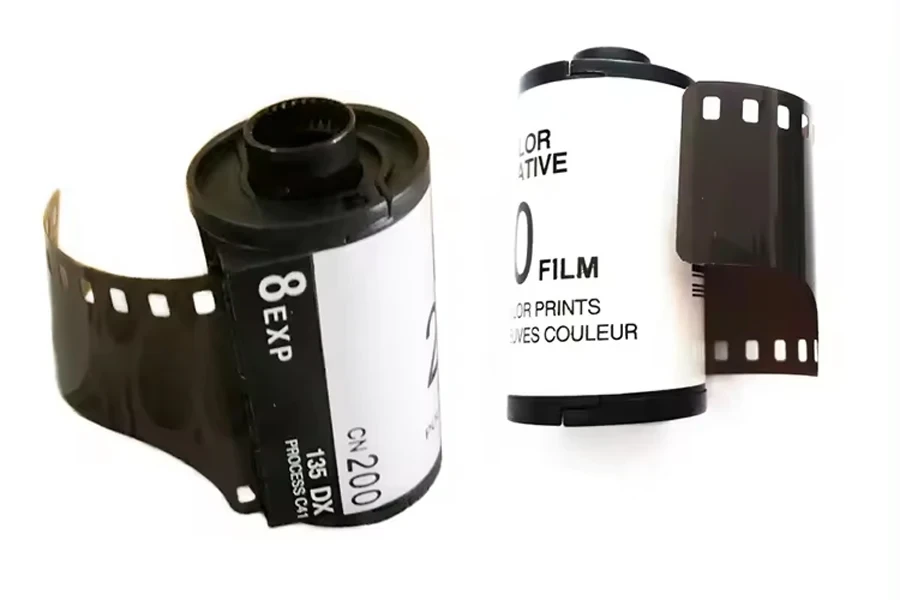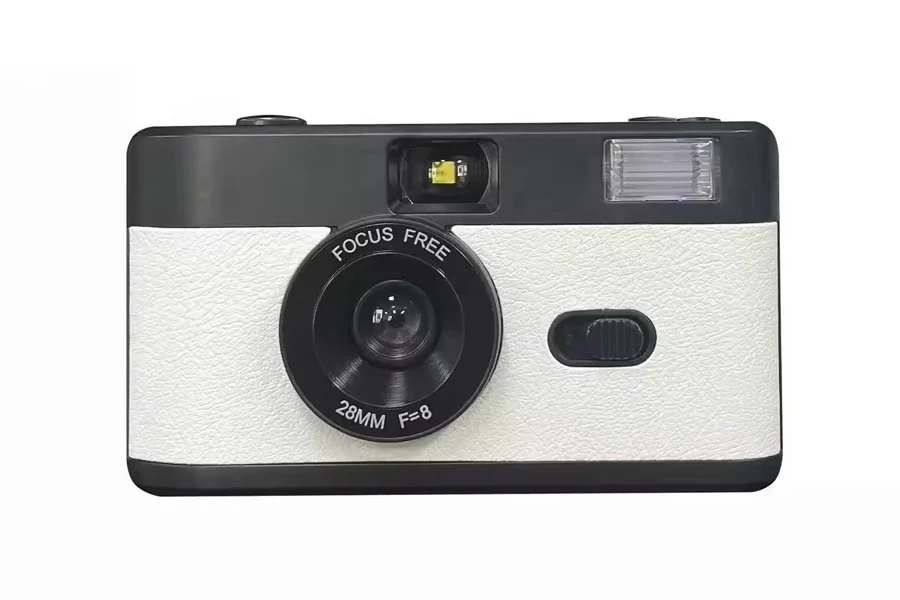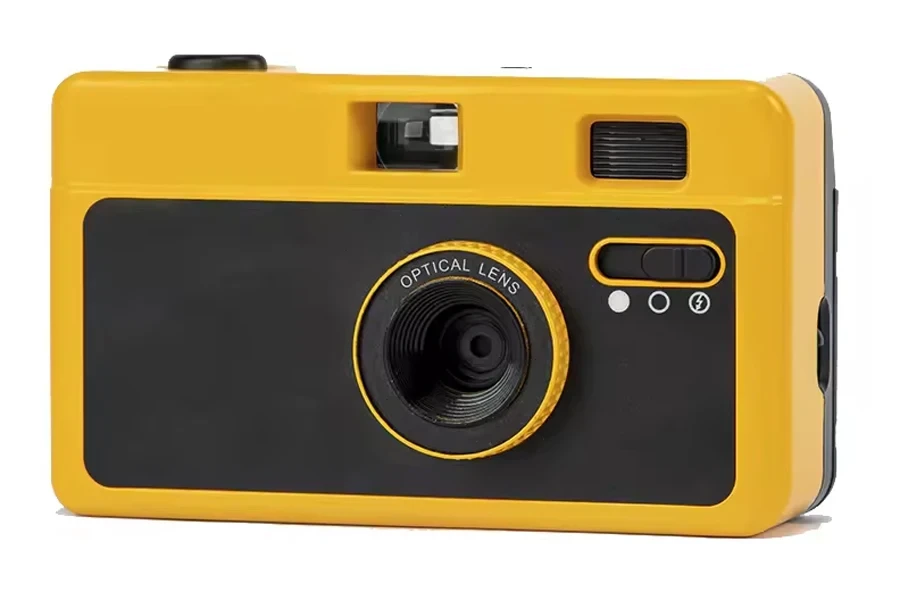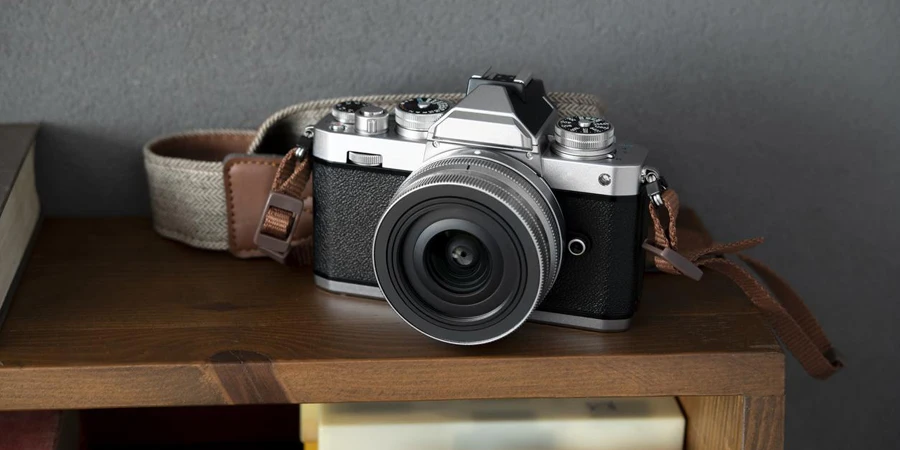Film photography is experiencing a vibrant revival, capturing the hearts of enthusiasts and professionals alike. In a world dominated by digital technology, film cameras offer a unique charm and unparalleled quality that digital cameras often strive to emulate. Selecting the right film camera in 2024 is crucial for capturing the essence of this timeless art form. Whether it’s the tactile satisfaction of winding the film or the anticipation of waiting for development, film cameras provide a distinct and rewarding experience. Understanding the various types and their specific uses will enable businesses to make informed decisions, ensuring they invest in models that truly enhance their photographic offerings.
Table of Contents
1. Exploring film camera types and their unique uses
2. The dynamic market landscape of film cameras
3. Essential tips for choosing the perfect film camera
4. Spotlight on the best film camera models of 2024
5. Conclusion
Exploring film camera types and their unique uses
35mm SLR cameras
35mm Single-Lens Reflex (SLR) cameras are known for their versatility and widespread use. These cameras use a mirror and prism system that allows photographers to see exactly what will be captured, making them ideal for a wide range of photography styles, from portraits to landscapes. SLRs typically offer interchangeable lenses, providing flexibility to adapt to different shooting conditions and artistic needs. Models like the Nikon F3 and Canon EOS-1V are celebrated for their robust build quality, precise control, and extensive range of compatible lenses, making them suitable for both amateur and professional photographers. The adaptability and broad range of lenses available for 35mm SLR cameras ensure they remain a popular choice among film enthusiasts.
Rangefinder cameras
Rangefinder cameras stand out due to their unique focusing mechanism, which involves aligning two images in the viewfinder. This system allows for precise focusing, especially beneficial in low-light conditions or when shooting fast-moving subjects. Rangefinders are often preferred for street and documentary photography because they are generally quieter and more compact than SLRs, making them less obtrusive. Notable models include the Leica M6 and the Contax G1, both of which are prized for their high-quality optics and ease of use. The Leica M6, for example, offers a full-frame 35mm format and manual controls that appeal to photographers seeking a traditional, hands-on experience. Rangefinder cameras excel in capturing spontaneous moments with clarity and discretion.
Compact cameras
Compact film cameras are designed for convenience and ease of use, making them perfect for casual photography and travel. These cameras are typically small, lightweight, and simple to operate, often featuring automatic settings that make them accessible to beginners. Models like the Olympus XA series and the Minox 35 GL are celebrated for their portability and ability to deliver high-quality images despite their diminutive size. The Olympus XA, with its rangefinder focus and sharp Zuiko lens, is a favorite among street photographers for its quick, unobtrusive shooting capability. The Minox 35 GL, known for being one of the smallest 35mm cameras ever made, offers excellent discretion and ease of carrying, making it ideal for everyday use. Compact cameras bring the joy of film photography to a broader audience without the need for extensive technical knowledge.

Medium format cameras
Medium format cameras use larger film sizes than 35mm cameras, resulting in superior image quality with greater detail and depth. These cameras are favored by professional photographers and artists who seek the highest possible image resolution for fine art, fashion, and commercial photography. Medium format cameras like the Mamiya 7 and the Hasselblad 500 series are renowned for their exceptional build quality and image sharpness. The Mamiya 7, for example, offers a rangefinder design with a 6×7 cm negative size, providing unparalleled detail and tonal range. The Hasselblad 500 series, known for its modular system and legendary Carl Zeiss lenses, allows photographers to customize their setup for various shooting scenarios. Medium format cameras excel in creating large prints with exquisite detail, making them a staple in professional photography studios.
This section highlights the distinctive characteristics and ideal uses of different types of film cameras, emphasizing their unique advantages and applications in various photography fields.
The dynamic market landscape of film cameras
Market resurgence and trends
The film camera market has experienced a notable resurgence in recent years, driven by a combination of digital fatigue and a nostalgic return to analog methods. This revival is reflected in the growing interest among both younger generations and seasoned photographers who appreciate the tangible and artistic qualities of film. Film cameras offer a unique aesthetic that digital methods often strive to replicate, adding to their appeal.
The nostalgia factor is significant, as many find the process of shooting with film — from loading the film to developing the negatives — deeply rewarding. The imperfections and unpredictability inherent in film photography are celebrated as part of its charm. This renewed interest has also been fueled by a desire for a more deliberate and mindful approach to photography, contrasting with the instant gratification of digital imaging.
Sales and popularity statistics
Experts currently value the film camera market at USD 277.91 million in 2023, and they expect it to reach USD 387.27 million by 2030. This growth is anticipated to happen at a 5.2% compound annual growth rate (CAGR) from 2023 to 2030. The demand for 35mm film cameras alone is projected to bring in USD 117.50 million by 2029. Additionally, the personal use segment of the film camera market is expected to reach USD 64.52 million by 2029, indicating significant interest from individual consumers.
Key demographics driving this market resurgence include millennials and Gen Z, who are discovering film photography for the first time and appreciate its distinct qualities. Established photographers are also contributing to this trend, seeking the depth and texture that film provides. The North American market is particularly robust, holding 31.23% of the total market share in 2022, with expectations for continued growth.

Influence of social media and communities
Social media platforms and online communities have been instrumental in boosting the popularity of film photography. Influencers and content creators regularly share their experiences with film cameras, highlighting the beauty and process of analog photography. Platforms like Instagram and YouTube are rich with tutorials, reviews, and personal stories that inspire and educate new enthusiasts.
Influential figures in the photography community, such as Willem Verbeeck and Matt Day, have amassed large followings by showcasing their expertise and passion for film. Their content emphasizes the unique qualities of film cameras, provides practical advice for beginners, and reviews various film stocks and camera models. This not only educates but also creates a supportive community for film photographers.
Online communities like the Film Photography Project and various Reddit forums offer valuable resources and support, fostering a collaborative environment. These platforms enable the exchange of knowledge, experiences, and equipment, further sustaining interest in film photography. The collective enthusiasm and shared resources within these communities significantly contribute to the market’s growth.
In summary, the film camera market is experiencing a robust revival driven by digital fatigue, nostalgia, and the influence of social media and online communities. This resurgence has not only sustained the market for vintage cameras but also encouraged manufacturers to continue producing film and related accessories, ensuring the continued growth and vitality of the film photography industry.
Essential tips for choosing the perfect film camera
Budget considerations
When selecting a film camera, budget plays a crucial role in determining the range of available features and overall performance. Film cameras can be categorized into several price brackets, each offering distinct advantages.
- Ultra-Bargain Options: Models like the Yashica FX-103 Program are excellent for those new to film photography or on a tight budget. Priced around $100, this camera provides essential features such as multiple shooting modes (Program, High-Speed Program, Aperture Priority, and Manual) and a wide ASA range from 12 to 3200. Its compatibility with Contax Zeiss lenses adds significant value, offering high-quality optics at an affordable price.
- Bargain Options: The Minolta X-570 or X-700, typically found for under $200, offer advanced features like manual and aperture priority modes. These cameras are robust and reliable, making them a favorite among enthusiasts. The Minolta X-700, with its program mode, is particularly user-friendly, while the X-570 is lauded for its bright viewfinder and durability.
- Mid-Range Choices: Cameras like the Nikon F3/F3HP, priced between $300 and $500, provide a professional-grade experience with features such as a built-in light meter, electronically controlled shutter, and compatibility with a vast array of Nikon lenses. The F3HP variant includes a high-eyepoint viewfinder, which is especially beneficial for those who wear glasses.
- Premium Models: High-end cameras like the Canon EOS-1V and Nikon F6, ranging from $1,000 to several thousand dollars, offer top-tier performance and build quality. The Canon EOS-1V, capable of shooting 10 frames per second, and the Nikon F6, known for its advanced focus tracking and metering modes, are ideal for professional use, providing unparalleled reliability and flexibility.

Camera features and specifications
Key features to consider when choosing a film camera include manual controls, lens compatibility, build quality, and additional functionalities.
- Manual Controls: Essential for creative control, manual controls allow photographers to adjust settings like shutter speed, aperture, and focus. For instance, the Nikon F3 offers precise control with its aperture-priority automation, making it suitable for various shooting conditions.
- Lens Compatibility: The ability to use a wide range of lenses enhances a camera’s versatility. The Canon EOS-1V, compatible with all Canon EF lenses, and the Nikon F6, supporting nearly all F-mount lenses since 1977, provide extensive options for photographers. This compatibility ensures that users can select the best lens for their specific needs, whether for portraits, landscapes, or macro photography.
- Build Quality: Durability is crucial, especially for professional use. Cameras like the Leica M6 are renowned for their robust construction and reliable performance. The Leica M6’s all-metal body and precise mechanical components make it a long-lasting investment.
- Additional Functionalities: Features like built-in light meters, interchangeable viewfinders, and advanced metering modes add significant value. The Nikon F6, for example, includes 3D Color Matrix metering and Multi-CAM 2000 autofocus sensor, which provide superior exposure accuracy and focus tracking.
Intended use and photography style
Matching the camera type to the intended use and photography style is essential for achieving optimal results.
- Street Photography: Rangefinder cameras like the Leica M6 and compact models like the Olympus XA series are ideal due to their discreet size and quiet operation. The Leica M6, with its manual focus and superb optics, excels in capturing candid moments, while the Olympus XA offers a compact design and sharp lens for quick, unobtrusive shooting.
- Portrait and Studio Photography: Medium format cameras such as the Mamiya 7 offer larger negatives and higher image quality, making them perfect for professional and fine art photography. The Mamiya 7’s rangefinder design and exceptional lenses ensure stunning detail and depth in portrait work.
- Travel and Casual Photography: Compact cameras like the Minox 35 GL or Reto Ultra Wide & Slim are lightweight and easy to use, making them ideal for travel. The Minox 35 GL, known for its discreet size and high-quality lens, is perfect for capturing spontaneous moments on the go.
Availability of accessories and film
The availability of compatible accessories and film stock is another critical factor to consider.
- Lenses and Flashes: Some cameras, like the Nikon F3, have a vast selection of compatible lenses and flashes, ensuring that photographers can find the right gear for their needs. The ability to easily source and replace accessories is vital for maintaining and expanding a photography kit.
- Film Stock: Access to a variety of film stocks allows photographers to experiment with different looks and qualities. Popular brands like Kodak, Fujifilm, and Ilford offer a range of films with unique characteristics, from color saturation to grain texture. Being able to choose from various film types enhances creative possibilities.
- Servicing and Repair Options: Ensuring that the chosen camera can be easily maintained and repaired is crucial for long-term use. Models with readily available parts and service centers, such as the Canon EOS-1V, provide peace of mind and ensure that the camera remains operational for years to come.
Selecting the right film camera involves balancing budget, desired features, intended use, and the availability of accessories and film. By carefully considering these factors, businesses can make informed decisions that cater to the needs of their customers, ensuring satisfaction and fostering a deeper appreciation for the art of film photography.

Spotlight on the best film camera models of 2024
Best ultra-bargain cameras
Yashica FX-103 Program
The Yashica FX-103 Program is a standout choice for those seeking an ultra-bargain film camera. Priced around $100, this camera is known for its exceptional value and solid performance. It features four shooting modes: Program, High-Speed Program, Aperture Priority, and Manual, offering flexibility for various shooting conditions. The Yashica FX-103 Program uses the Contax Yashica (C/Y) bayonet mount, allowing compatibility with high-quality Contax Zeiss lenses, which are renowned for their sharpness and clarity. Additionally, the camera boasts an extensive ASA range from 12 to 3200, making it versatile for different lighting situations. Users appreciate its durability and ease of use, making it an excellent entry-level choice for those new to film photography.
Minolta X-570/X-700
The Minolta X-570 and X-700 are highly regarded in the bargain category, often priced between $150 and $200. Both models are equipped with manual and aperture priority modes, while the X-700 also includes a program mode. These cameras are celebrated for their robust construction and reliable performance. The X-570 is favored for its bright viewfinder and user-friendly interface, making it a popular choice among enthusiasts. Minolta lenses, particularly the 50mm f/1.7 and the renowned 58mm f/1.2 Rokkor, are affordable and provide excellent image quality. The X-700, with its additional program mode, offers a more automated shooting experience, appealing to photographers who prefer a mix of manual and automatic controls.
Top mid-range choices
Nikon F3/F3HP
The Nikon F3/F3HP is considered one of the finest mid-range film cameras, with prices ranging from $300 to $500. Known for its rock-solid build and exceptional ergonomics, the Nikon F3 features a built-in light meter and aperture-priority automation, enhancing its usability in various shooting scenarios. The F3HP variant includes a high-eyepoint finder, which is particularly beneficial for photographers who wear glasses. The F3’s electronically controlled shutter ensures accurate exposures, though it requires batteries to operate. This camera is compatible with a wide range of Nikon lenses, from vintage AI lenses to modern AF-D lenses, providing extensive flexibility. The interchangeable focusing screens and finders add to its versatility, making it a favorite among professional and serious amateur photographers.
Canon EOS-1V
The Canon EOS-1V is another top choice in the mid-range category, known for its advanced features and robust build. Released in 2000, the EOS-1V can shoot at an impressive 10 frames per second, making it one of the fastest moving-mirror film cameras ever made. It offers five metering modes, including evaluative, spot, and multi-spot metering, and features 45-point TTL phase detection autofocus. This camera is compatible with all Canon EF lenses, providing a wide array of options for different types of photography. Its durability and reliability have made it a preferred choice for professional photographers, especially those who require high-speed performance and precise autofocus in challenging conditions.
Premium professional picks
Leica M6
The Leica M6 is a legendary film camera that remains highly sought after by professional photographers and enthusiasts. Known for its exceptional build quality and precision engineering, the M6 offers manual focus and exposure controls, providing complete creative control. Its bright viewfinder with parallax correction and frame lines for various focal lengths enhances composition accuracy. The Leica M6 is compatible with Leica M-mount lenses, renowned for their optical excellence. This camera’s all-metal construction ensures durability, making it a reliable choice for professional use. The tactile experience of using a Leica M6, combined with its unparalleled image quality, makes it a top choice for discerning photographers.
Nikon F6
The Nikon F6, often considered the pinnacle of 35mm film SLR cameras, offers advanced features and professional-grade performance. Released in 2004, the F6 features a robust yet compact body with an optional vertical grip. It is compatible with nearly all F-mount lenses since 1977, including modern G and VR lenses, providing vast flexibility. The F6’s Multi-CAM 2000 autofocus sensor and 3D Color Matrix metering ensure precise focus and exposure in a variety of conditions. Its quiet operation and solid construction make it ideal for professional applications, from studio work to field photography. The Nikon F6’s advanced technology and exceptional build quality have solidified its reputation as one of the best film cameras ever made.
This section highlights the distinctive features and advantages of the best film camera models available in 2024, catering to different budget levels and professional needs.
Conclusion
Selecting the perfect film camera involves balancing budget, desired features, and specific photography needs. From ultra-bargain options like the Yashica FX-103 Program to premium choices such as the Leica M6 and Nikon F6, each camera offers unique advantages. Understanding the resurgence of film photography, market trends, and the influence of social media can help in making informed decisions. Whether for street, studio, or travel photography, the right camera enhances the creative process. Embracing this knowledge empowers businesses to offer the best products, encouraging a renewed appreciation for the art of film photography.




